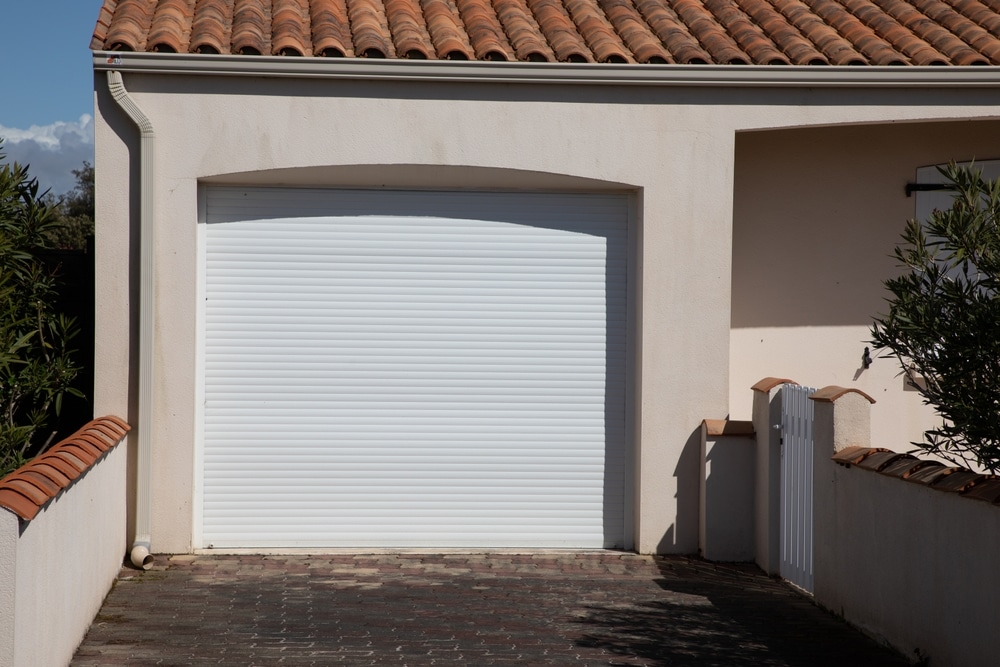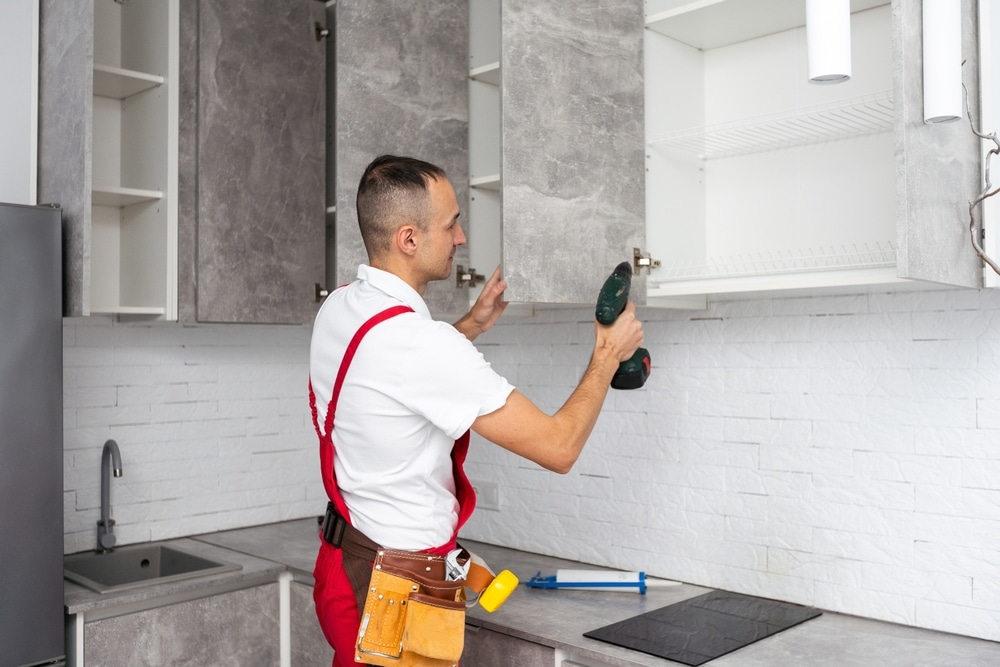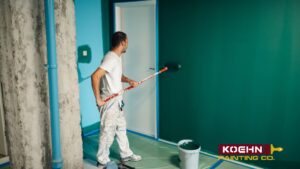Table of Contents
ToggleHome improvement return on investment (ROI)—often referred to as the rate of return on home improvements—measures how much of the money spent on renovations is recouped through increased property value, either immediately or upon sale. Calculated as a percentage using the formula: (Increase in Home Value ÷ Cost of Renovation) × 100, ROI reflects not just monetary gains but also benefits like faster sales, competitive offers, and enhanced refinancing opportunities.
Strategic projects aligned with buyer preferences, market trends, and functional upgrades typically yield the highest returns. Factors like location, timing, cost-to-value balance, and quality of workmanship all significantly influence ROI.
Certain projects stand out for their high ROI. For example, garage door replacements can yield returns of up to 194%, while manufactured stone veneer (153%), minor kitchen remodels (96%), and siding replacements (88%) also rank highly.
Entry door upgrades, window replacements, midrange bathroom remodels, and wood deck additions deliver notable returns by enhancing curb appeal, energy efficiency, and livability. In contrast, luxury or highly personalized upgrades, swimming pools, and extensive landscaping often fail to deliver strong returns due to limited buyer appeal and high maintenance costs.
Budget-friendly improvements such as interior painting, updated fixtures, improved landscaping, and small kitchen or bath refreshes can also yield substantial ROI, especially when executed professionally.
Financing options, like those offered through partnerships with platforms such as Hearth, can make renovations more accessible by providing competitive loan offers without impacting credit scores. Ultimately, successful home improvements balance aesthetics, function, and financial prudence, ensuring each project supports long-term goals and market value.
What Is The Home Improvement Return On Investment?

When you invest in your home, the goal isn’t just to create a more comfortable living space; it’s often to increase its market value. That’s what home improvement return on investment is all about. This is the percentage of the money you spend on a renovation that you can expect to recover in home value, either immediately or when you sell.
Let’s say you spend $10,000 remodeling a bathroom. If the update boosts your home’s resale value by $7,000, your return on investment is 70%. A strong rate of return on home improvements means your money is working for you, not just improving your day-to-day life but contributing to long-term financial growth.
But ROI isn’t always about cash in hand. It can show up in different ways:
- Your home may sell faster.
- You could receive more competitive offers.
- It might appraise higher, giving you better leverage for refinancing.
- Or you may simply enjoy your space more—something buyers will pick up on too.
Understanding the home improvement return on investment helps you avoid the common pitfall of over-renovating or investing in features that don’t add real value. Projects that align with current buyer trends and offer practical upgrades often provide the best ROI. On the other hand, highly personalized or niche improvements may have limited appeal and generate a weaker return.
Some other key factors to consider are:
- Location: What works in one market might flop in another. Renovating a kitchen in a hot suburban market could pay off handsomely, while the same project in a rural or overbuilt neighborhood might not carry the same value bump.
- Timing: Certain renovations increase their value when aligned with broader market trends, such as eco-friendly upgrades when energy efficiency is a top concern. Additionally, during a seller’s market—when inventory is low—even minor updates can deliver excellent returns by making your property more appealing.
- Cost-to-value balance: Larger, expensive remodels often do not recoup as much relative to the cost compared to smaller, strategic upgrades. For instance, a simple update of a kitchen or bathroom usually yields a better ROI than tearing everything out and starting over.
- Execution: ROI is closely tied to quality. A beautifully executed $5,000 paint job can add more value than a poorly done $15,000 remodel. Homeowners often underestimate how much buyers notice the difference between professional work and DIY shortcuts.
In short, understanding your rate of return on home improvements allows you to make smarter spending decisions. It’s not just about appearance; it’s about strategy. Every dollar you invest in your home should either improve its functionality, boost its curb appeal, or raise its value. Ideally, all three.
Contact us here if you would like to find the best painting contractor for your residential or commercial painting needs.
Property Renovations With the Best and Worst ROI

When you’re working on property renovations, whether you’re preparing to sell, upgrading for comfort, or building long-term equity, smart renovations can offer significant rewards—if you know where to invest. However, not every home improvement provides the same return on investment.
That’s why understanding the rate of return on home improvements isn’t just smart, it’s essential.
What is the ROI formula for renovating your home?
Let’s start with a basic concept: ROI, or return on investment, is a way to measure how much of the money you spend on renovations will come back to you, usually when you sell the home. The formula is simple: ROI (%) = (Increase in Home Value ÷ Cost of Renovation) × 100.
For example, if you spend $20,000 remodeling a kitchen and your home value increases by $15,000, the ROI would be 75%.
Of course, real-world ROI isn’t always this neat. Market trends, neighborhood comps, material quality, and contractor skill all impact your bottom line. That’s why you should never look at renovation projects in a vacuum. The key is aligning your goals—whether aesthetic, functional, or financial—with what the market actually values.
Now, let’s move to what we all want to know…
What home improvement has the best ROI?
Let’s start with the upgrades that tend to offer the most reliable returns. According to Remodeling Magazine’s Cost vs. Value Report and expert industry insights, these projects shine not just for their function, but for their financial upside:
- Garage door replacement (ROI up to 194%): A simple swap with a new, stylish, energy-efficient door can give your home a polished look while offering one of the best paybacks in the game.
- Manufactured stone veneer (ROI 153%). This upgrade offers a dramatic visual transformation at a fraction of the cost of natural stone—boosting curb appeal and resale value alike.
- Minor kitchen remodels (ROI 96%): We’re not talking about full gut jobs. Think resurfaced cabinets, modern lighting, new fixtures, and a neutral color palette. Small changes, big impression.
- Siding replacement (fiber cement or vinyl) (ROI 88%): New siding doesn’t just improve looks, it protects your investment and reduces energy costs. A win-win for curb appeal and efficiency.
- Entry door replacement (ROI 188%). First impressions matter. A new steel front door signals security, style, and energy savings.
- Window replacement (ROI Vinyl: 67%, Wood: 63%): New windows are functional and aesthetic upgrades that improve energy efficiency and comfort, a central selling point for buyers.
- Midrange bathroom remodel (ROI 74%): Updating fixtures, retiling, and refreshing the vanity greatly influences a buyer’s perception.
- Wood deck addition (ROI 83%): Outdoor living spaces have become extremely popular. A well-built wood deck adds usable space and significant value.
These renovations tend to attract a wide range of buyers, and more importantly, they address real-world concerns: energy efficiency, aesthetics, livability, and curb appeal.
And then there are the upgrades that rarely pay off…
It’s easy to fall into the trap of over-improving a property—especially with upgrades that are expensive, trendy, or overly personal. If maximizing resale value is the goal, here are a few renovations that often fail to deliver a strong return:
- Swimming pools: Unless you live in a hot-weather region or luxury neighborhood, pools can be seen as a maintenance burden. They’re expensive to install and insure, and not all buyers want one.
- Extensive landscaping projects: While curb appeal matters, elaborate gardens, waterfalls, and koi ponds can be expensive to maintain and might not align with every buyer’s vision.
- Overly customized spaces: a built-in recording studio? A gothic library? Great for you, maybe. But highly personalized spaces often restrict mass appeal.
- Luxury bathroom overhauls: Think twice before splurging on marble everything and tech-loaded showers. You may not recoup your investment if the upgrade exceeds neighborhood standards.
Budget-friendly upgrades that still offer solid ROI
You don’t need a six-figure renovation to make meaningful improvements. In fact, some of the best returns come from simple, affordable upgrades, especially when executed properly.
- Interior painting: Clean, neutral-colored walls breathe new life into any room, especially if you keep up with the latest trends. It’s one of the cheapest upgrades you can make, and one of the most visually impactful. Fresh paint suggests cleanliness, care, and readiness.
- Updated light fixtures and hardware: Swapping out old fixtures, knobs, and faucets instantly modernizes your space. It’s subtle, but buyers notice.
- Improved landscaping and exterior clean-up: A pressure-washed walkway, some mulch, and trimmed bushes can boost curb appeal without breaking the bank.
- New backsplash or regrouted tile: Small kitchen and bath upgrades go a long way toward freshening up dated spaces.
These upgrades are ideal for homeowners working within a tighter budget, or those prepping their home for a fast sale. Think of them as low-risk, high-appeal.
Financing options that make renovating smarter
One of the biggest obstacles to starting renovations isn’t coming up with design ideas. It’s figuring out how to pay for them. That’s why Koehn has teamed up with Hearth, a financing platform that helps homeowners find the best options for their project budgets.
Here’s how it works:
- 2-Minute Pre-Qualification: With zero impact on your credit score, you can explore real loan offers based on your income, project goals, and timeline.
- Compare Offers from 17 Lenders: Hearth acts as a broker, not a lender, allowing you to easily compare APRs, terms, and monthly payments in one place.
- Choose the Best Loan for You: Loan amounts range from $2,000 to $50,000—ideal whether you’re repainting or doing a major exterior overhaul. There are no prepayment penalties, and funds typically arrive in 1 to 5 business days.
- Finalize and Upload Documents: Once you’re ready, you upload your documents and proceed securely through Hearth’s platform. The process is simple, fast, and built around transparency.
We partnered with Hearth because we know that making your home better shouldn’t mean draining your savings or maxing out a high-interest credit card.
In the end, renovating smart isn’t just about picking the right projects; it’s about making choices that align with your lifestyle, your budget, and your long-term goals for the property. Pairing a realistic view of home improvement return on investment with the right financing can help you make upgrades that pay you back—financially and personally—for years to come.
Rate of Return on Home Improvements: Final Thoughts

Home improvements can be exciting, but they’re also strategic investments. The best renovations add beauty, comfort, and efficiency while keeping your property competitive in the market. When you understand the rate of return on home improvements, you get to be better equipped to decide when to splurge, when to save, and when to pass on a trend that won’t hold its value.
The real secret is aligning your upgrades with your goals and the realities of your local market. No matter if you’re thinking of small changes like a fresh coat of paint to larger investments like energy-efficient windows, each project should be measured not just by its upfront cost, but by how it supports your long-term vision for your home, and how it impacts your bottom line when it’s time to sell.
Whether you’re wondering “are home improvements tax-deductible?”, weighing the IRS home improvement deductions for specific upgrades, or simply exploring what’s possible on your budget, remember: careful planning and good documentation will always work in your favor.
The right project, at the right time, can turn your property into not just a home, but one of the smartest investments you’ve ever made.
Discover the Koehn Painting difference – contact us today for a free estimate and step into a vibrant, freshly painted home!




